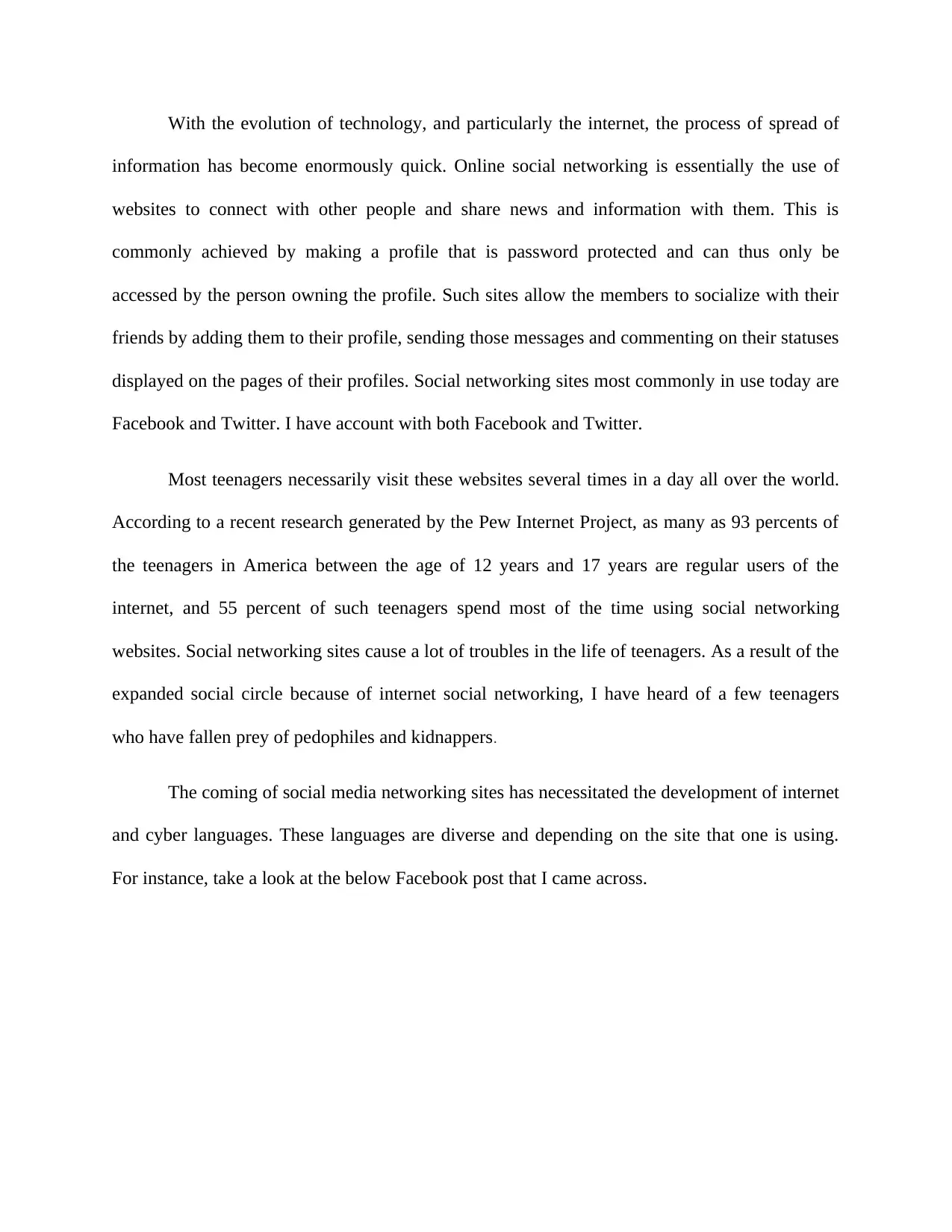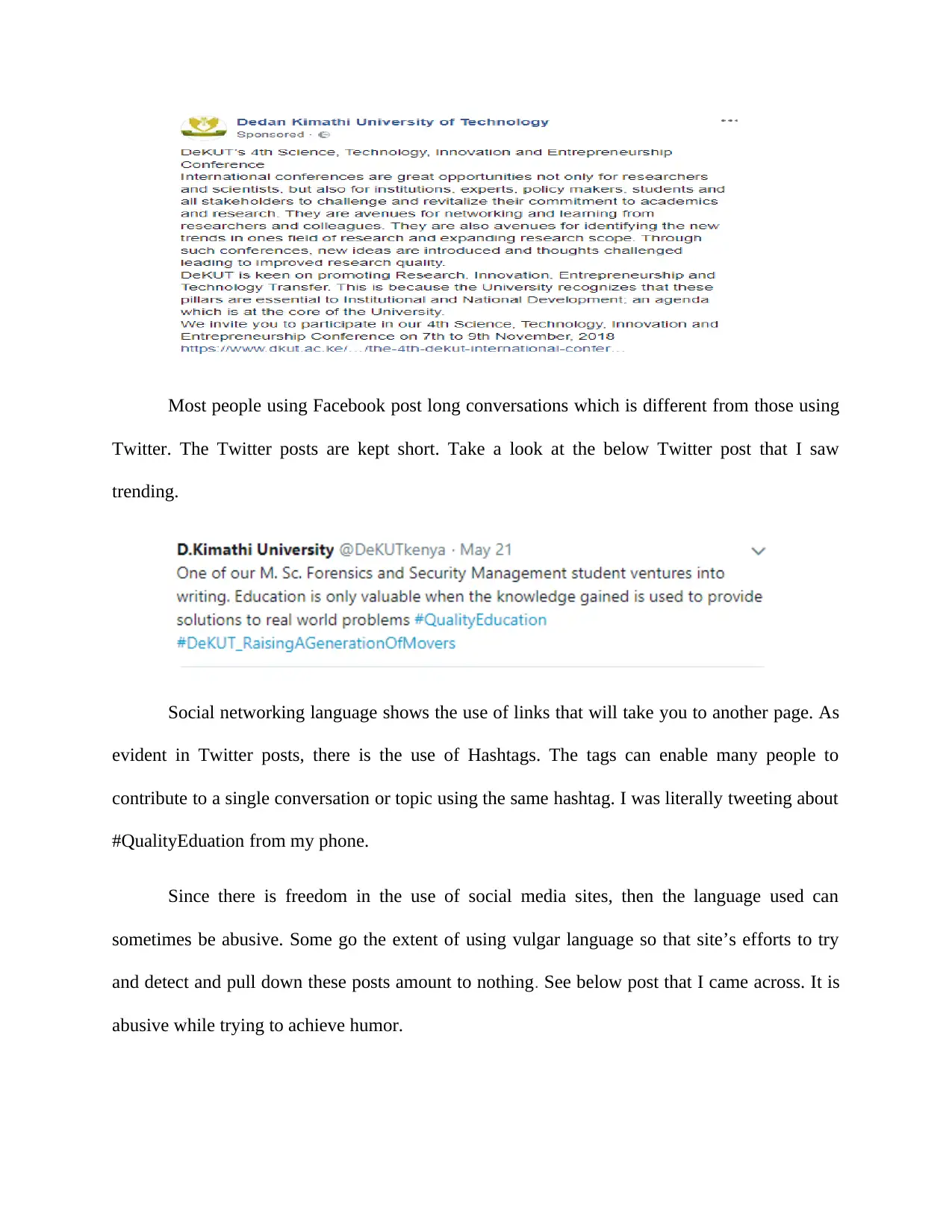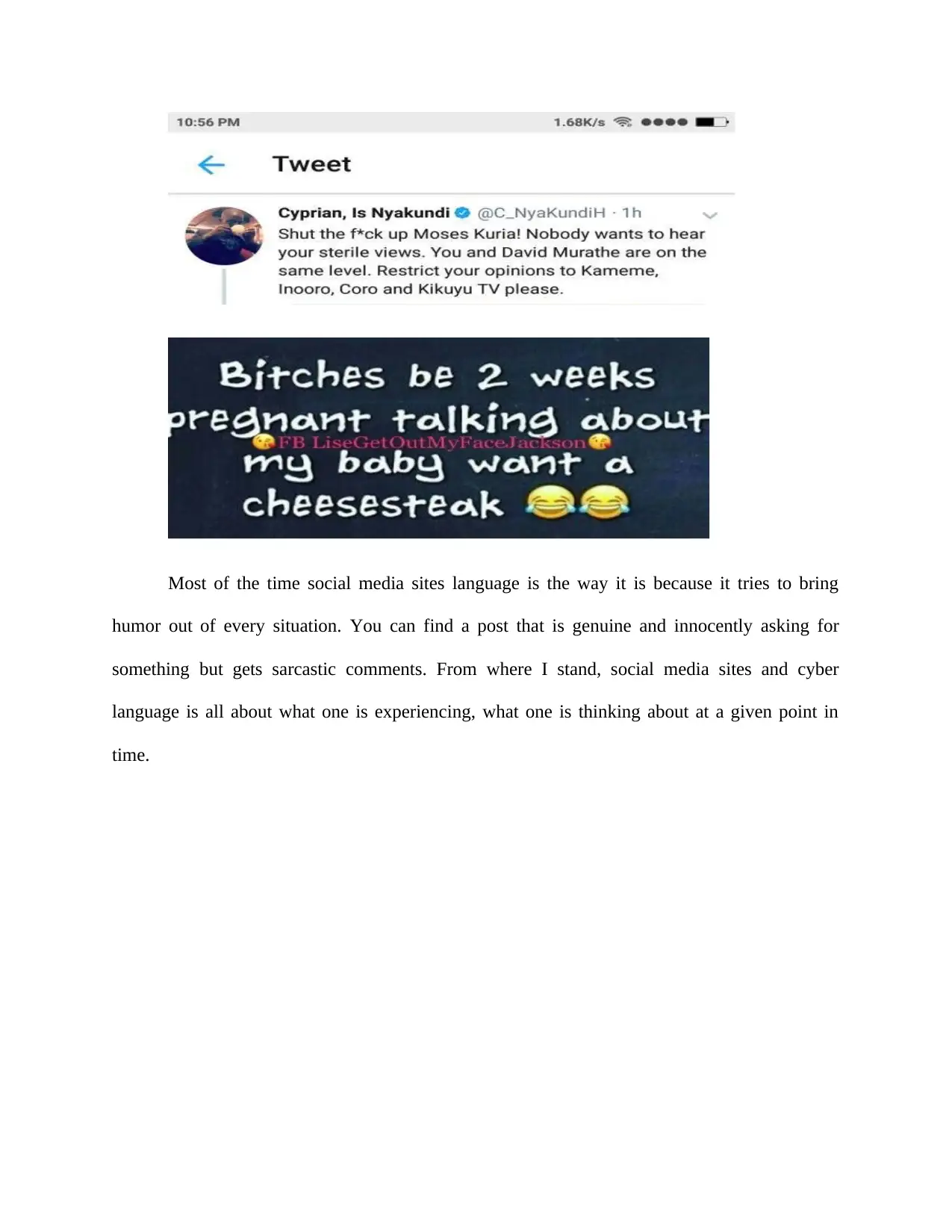LING248 Reflective Blog Post: Analyzing Social Media Cyber Language
VerifiedAdded on 2023/06/11
|4
|522
|431
AI Summary
This reflective blog post discusses the impact of social networking and cyber language, particularly among teenagers. It explores the evolution of online communication through platforms like Facebook and Twitter, highlighting the use of hashtags, links, and abbreviated language. The author reflects on both the positive and negative aspects, including the potential for abusive language and the prevalence of humor and sarcasm. The post also touches on the challenges of moderating content and the evolving nature of online expression, concluding that social media language reflects individual experiences and thoughts in real-time. Desklib provides students with access to similar assignments and past papers for further study.
1 out of 4










![[object Object]](/_next/static/media/star-bottom.7253800d.svg)